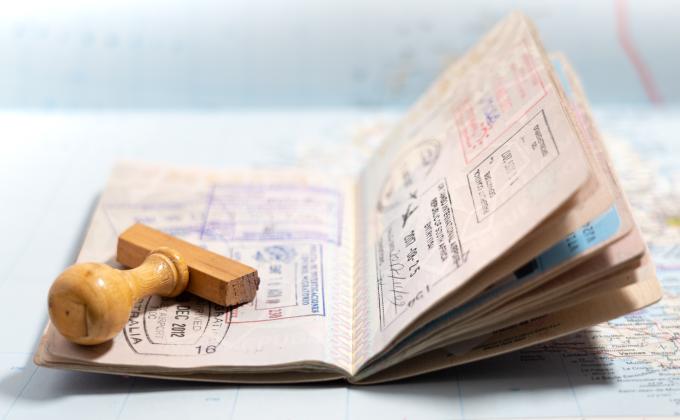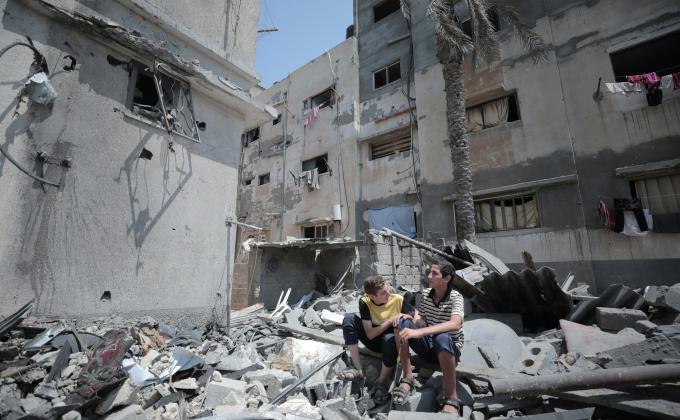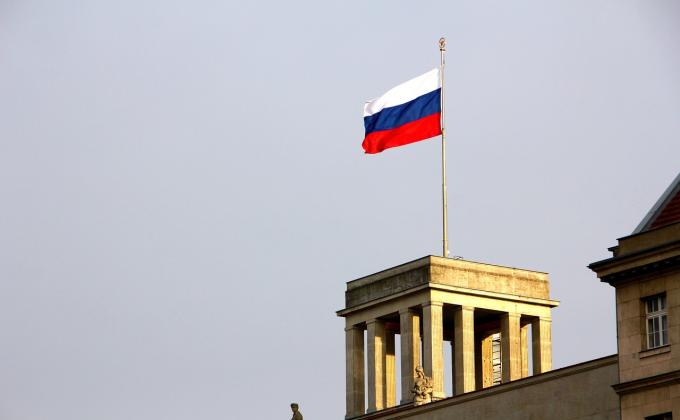The September 2012 attack on the US Embassy in Benghazi that claimed the lives of Ambassador J. Christopher Stevens and three other Americans dramatically illustrated the threat of jihadist violent non-state actors in Libya. Unfortunately, the situation has not subsequently improved. Security in Libya has continued to worsen, and salafi jihadist groups like the one that spearheaded the Benghazi attack are in the midst of executing a regional strategy. North Africa and its surroundings can be understood as encompassing countries that for the jihadist movement are lands of dawa, where they focus on missionary preaching, and also lands of jihad, where violence is more prominent. Currently, the lands of jihad are being exploited by militants residing in lands of dawa to arm themselves and train for violence. We would be well advised to understand the symbiotic relationship between lands of dawa and jihad for the movement.
The Post-Arab Uprisings Environment
One of the most important facets of understanding salafi jihadism in North Africa is how the Arab Uprisings have altered the shape of that movement. Al-Qaeda and other salafi jihadists had begun formulating a strategy for this new environment even as Hosni Mubarak’s regime was still drawing its final breaths in Egypt. Though jihadists were entirely marginal to the initial revolutions in Tunisia and Egypt, movement strategists were able to reach a rough consensus about the developments that produced a simple, and largely effective, set of principles for action in states experiencing leadership transitions. They agreed that the political upheaval gripping the region helped them, for a variety of reasons: one of the most significant reasons was that they foresaw unprecedented opportunities to undertake dawa, and thus propagate their particular version of the Islamic faith. The new, democratically-elected regimes (some of which were Islamist in orientation) would be less likely to suppress jihadist groups’ dawa efforts so long as they did not explicitly engage in violence against the state. For this reason, Kuwait-based jihadist commentator Hamid bin Abdallah al-Ali claimed in a statement posted on his official website that “the Islamic project” would be “the greatest beneficiary from the environment of freedom”. Prominent jihadist figures have spoken of the advantages of dawa in this new environment. In a statement he released, al-Qaeda’s Atiyatallah Abu Abd al-Rahman noted a “historical opportunity” to undertake dawa “in light of the freedom and opportunities now available in this post-revolution era”. In a post on the salafi jihadist web forum Ansar Dawlat al-Iraq al-Islamiyah, Hamzah bin Muhammad al-Bassam urged members of the movement to “be armed with awareness and knowledge, focus on dawa among people, be of a good character, and remember that you are an example to whoever is guided by you”. And al-Qaeda emir Ayman al-Zawahiri, in a statement released by Al-Sahab Media, noted that “an opportunity for advocacy and statement in Egypt and Tunisia has opened”. Indeed, groups like Ansar al-Sharia in Tunisia (AST) have been extremely effective at expanding their numbers and influencing in this new environment. However, the salafi jihadist movement has never been satisfied with constraining itself to non-violent advocacy. Even in lands of dawa, the movement’s leading thinkers foresee an eventual turn to violence. Al-Bassam, for example, made clear that the movement’s efforts should ultimately produce “real and open existence for jihad”. And one young AST leader told Italian researcher Fabio Merone that the group has not “eliminated the idea of jihad from our philosophy”, but is currently refraining from revolutionary violence due to the dawa opportunities that it enjoys. Some of the movement’s post-Uprisings militant activity has taken the form of vigilante violence aimed at such perceived internal foes as artists, civil society activists, educators, and religious minorities (Such violence can bolster the perception that the state is failing if it goes unchecked or unpunished.) But another aspect has involved jihad, which these groups understand as warfare against other competitors for power.
Land of Dawa, Lands of Jihad
So where is a dawa-based strategy predominant for jihadists, and where will we see a more active embrace of jihad? Countries like Tunisia and Egypt experienced relatively smooth successions because their dictators either fled (Zine El Abidine Ben Ali) or were forced from power (Hosni Mubarak) early in the process, rather than suffering through protracted military confrontations, as in Libya or Syria. Thus, Tunisia and Egypt can largely be characterised by continuity in state institutions: since the state was not destroyed in the process of regime change, neither Tunisia nor Egypt had to re-establish a central government or, for the most part, rebuild their security services. Indeed, the recent military coup in Egypt has been described by some commentators as a reassertion of that country’s “deep state”. In turn, this continuity has helped produce relative internal stability, thus making the countries lands of dawa for salafi jihadists. On the other hand, unstable countries like Libya and Syria have been lands of jihad. Here it is important to note the significance of jihadist groups’ regional approach: having steep variegations in how self-described jihadist groups relate to violence allows groups like AST and Egypt’s salafi jihadists to focus on propagating their ideology and refrain from the kind of large-scale involvement in, or preparation for, violence that could trigger a state crackdown. At the same time, these groups can take advantage of the lands of jihad to arm themselves and undertake military training.
Libya's Role
Even before the Benghazi attack increased public attention to Libya, the country played an important role in the regional picture for jihadist groups. The fact that Libya’s central government is incredibly weak, and the country increasingly chaotic, is at this point undeniable. We need only look at such recent developments as armed men blocking the interior ministry in Tripoli and forcing its closure for more than a week at the beginning of July; the 5 July gun attack that almost killed France’s honorary consul in Benghazi; the June car bomb attack on two Italian diplomats in Tripoli; the bombing of the French embassy in late April; or the March kidnapping of five British humanitarian activists in eastern Libya. Jihadist groups have taken advantage of this environment in several ways. One is training for militant activities, with camps operating in southern Libya. Some of the impact of these camps may be seen in the January attack on the In Amenas gas complex in Algeria – attacks in which more than 800 people were held hostage, and at least 39 foreign hostages were killed. Some of the In Amenas attackers reportedly trained in southern Libyan camps and used Libya as a staging ground. The camps may also be used to prepare for future conflict in countries where there is no active jihad at present. Some of the camps in southern Libya, which include preparations for suicide missions, are run by an Egyptian militant named Muhammad Jamal Abu Ahmad; this outfit is known as the “Jamal network” within the US intelligence community. Egyptian recruits have been among his trainees. In addition, Muhammad al-Zawahiri reportedly has connected his brother, Ayman al-Zawahiri, with the Jamal network. A second issue is the flow of arms into neighbouring countries. The In Amenas attackers made use of Libyan arms in their operation. There has also been a flow of arms from Libya across Algeria and into Tunisia, where the weapons have helped to strengthen AST’s military capabilities (the smuggling into Tunisia was also at the centre of recent clashes between security forces and an Al-Qaeda in the Islamic Maghreb (AQIM)-linked group called Katibat Uqbah Ibn Nafi on the Tunisia-Algeria border, resulting in the death of two Tunisian soldiers and injuries to at least twenty). Libyan arms have also poured into Egypt’s North Sinai, which has seen an escalation in attacks on security forces following Mohamed Morsi’s ouster as president. A third issue is how Libya can serve as a safe haven for jihadists. Following the French intervention in Mali, fighters from both AQIM and Ansar al-Dine made their way into southwest Libya, where they evaded pursuit by “blending with local militant groups”. This is also an important part of the jihadist regional strategy: rather than standing and fighting in Mali (where they would lose badly in a conventional fight), many of the militants who were occupying the north melted away. Being able to move across porous borders and into areas where they can find safe haven helps keep the movement’s capabilities alive and prevent significant attrition. Exacerbating the advantages militant groups can find in Libya, the government has proven unable (or unwilling) to respond to provocations on its soil. The September attack in Benghazi that killed Ambassador Stevens was an embarrassment for Libya, yet it did not mount a crackdown against militant groups. Salafi attacks have targeted sufis, a sect particularly disfavoured by hardline salafists, with dozens of attacks on sufi shrines. For example, in March a bomb blew up the Sidi Al-Andalusi mausoleum in Tripoli. Christians have also been targeted by salafists. In March, a Coptic church in Benghazi was ransacked and set on fire. Christian graves have also been attacked and defaced. These attacks on minority groups – whether Islamic sects or Christians – are not the work of Libyan society as a whole, but rather of hardline salafists. The lack of a vigorous state response after these incidents helps to bolster the perception that salafi militants have free reign inside Libya.
Conclusion
The relationship between countries where dawa is the dominant jihadist strategy and countries where jihad is dominant is a vital aspect of the regional terrorist threat. In this sense, North Africa and its surroundings should be understood as a whole. The lands of jihad can in turn make violence more likely in countries where dawa is predominant. Obviously, a very dangerous game is being played in Egypt right now. If violence escalates there, look for countries like Libya to be an increasingly important part of that dynamic: Libya may be used to arm and train Egyptian salafi jihadists while security services are otherwise preoccupied by the need to push back against unrest. Egypt will thus likely be the next test case for the jihadist regional strategy.








